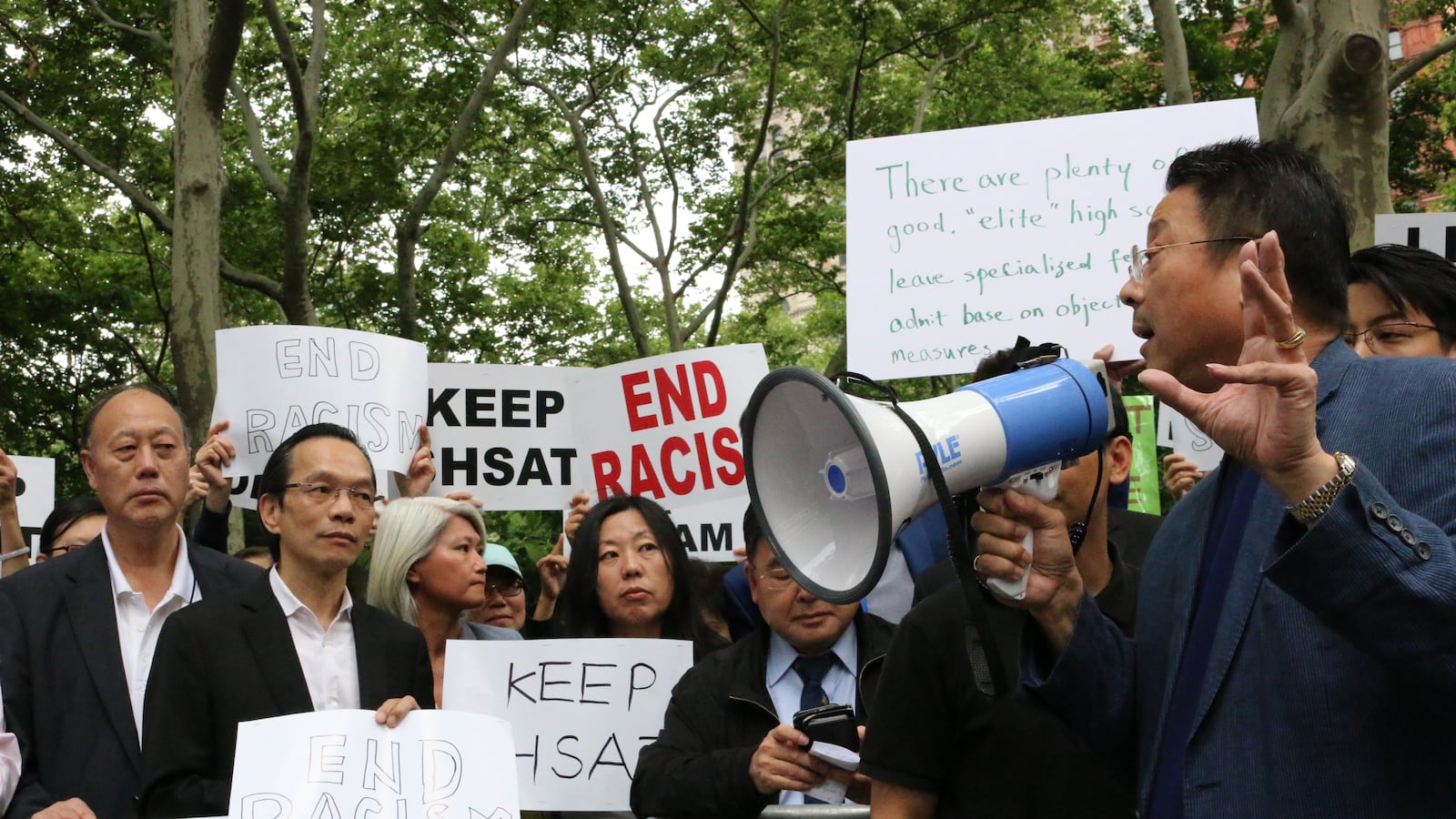As New York City is engulfed in a debate over efforts to better integrate the city’s specialized high schools, the elite schools remain stubbornly segregated, new data from the education department show.
This year, 10.5 percent of admissions offers for specialized high schools that require an entry exam went to black and Hispanic students — virtually unchanged from previous years, according to statistics released Monday. Together, those students make up almost 70 percent of public school enrollment citywide.
Once again, the majority of students who received offers were white (about 29 percent) or Asian (about 51 percent).
This year’s lackluster results come against the backdrop of the city’s most aggressive efforts yet to make the schools more diverse. The city is dramatically expanding a program that offers admission to students from needy families who score just below the entrance exam cutoff, and Mayor Bill de Blasio has also launched an effort to scrap the test, which currently stands as the sole criteria used in admissions. The efforts have sparked an outcry from some parents and officials and have even led to a lawsuit.
In a statement, schools Chancellor Richard Carranza said the numbers represent an “unacceptable status quo.”
This year, about 27,500 students took the Specialized High Schools Admissions Test, or SHSAT, and just under 5,000 received an admissions offer. At the exam schools, about 4 percent of offers went to black students and 6.6 percent went to Hispanic students, according to this year’s data.
The number of black students admitted to the city’s most sought after specialized high school, Stuyvesant, actually decreased this year to just seven offers out of almost 900. At Staten Island Technical, 11 Hispanic students were admitted out of more than 300.
Facing such dismal results, the city this year is dramatically expanding the Discovery program, which offers admission to students who scored just below the exam cut off. The city has also changed who is eligible for the program in an effort to admit the neediest students.
This year, about 13 percent of specialized high school seats will be allotted through Discovery, for a total of about 300 more slots than last year. Those offers won’t be made until later this spring.
But the Discovery changes and expansion are now the subject of a lawsuit filed by Asian families who say their children are being discriminated against. While Asian students account for 16 percent of public school enrollment citywide, they make up more than 60 percent of enrollment in specialized high schools. A judge recently allowed the city’s plan to move forward until the case is decided, but even with the changes, city lawyers in legal filings have expressed doubt the Discovery program will make much of a difference.
The city has already tried a number of other ways to diversify the schools. For example, more schools are now administering the specialized high school test on campus during a school day. Typically, students take the test on a weekend at a central location.
Those efforts have largely failed to move the needle: The number of students who took the test at their own school and who received a specialized high school offer actually went down this year, and the program has tended to benefit mostly white and Asian students.
Ultimately, integration advocates point to the single entrance exam as the main barrier to making the specialized high schools more diverse, saying middle-class families will always have the time and resources to out-prepare their kids. The specialized high schools enroll fewer needy students than the city average. Others counter that many Asian students come from low-income families.
Since the SHSAT is required under state law, eliminating it would require the support of legislators who have so far been reluctant to take up the issue.
“You can expand access to a flawed test all you want, but the results will never keep up. Tinkering on the prep side is just wasting money,” said Lazar Treschan, who has studied the city’s specialized high schools closely for the Community Service Society of New York. “What we need is a real state-level strategy that will overturn the SHSAT, and there are many of us in the community willing to work alongside the mayor and anyone else in order to make that happen.”

